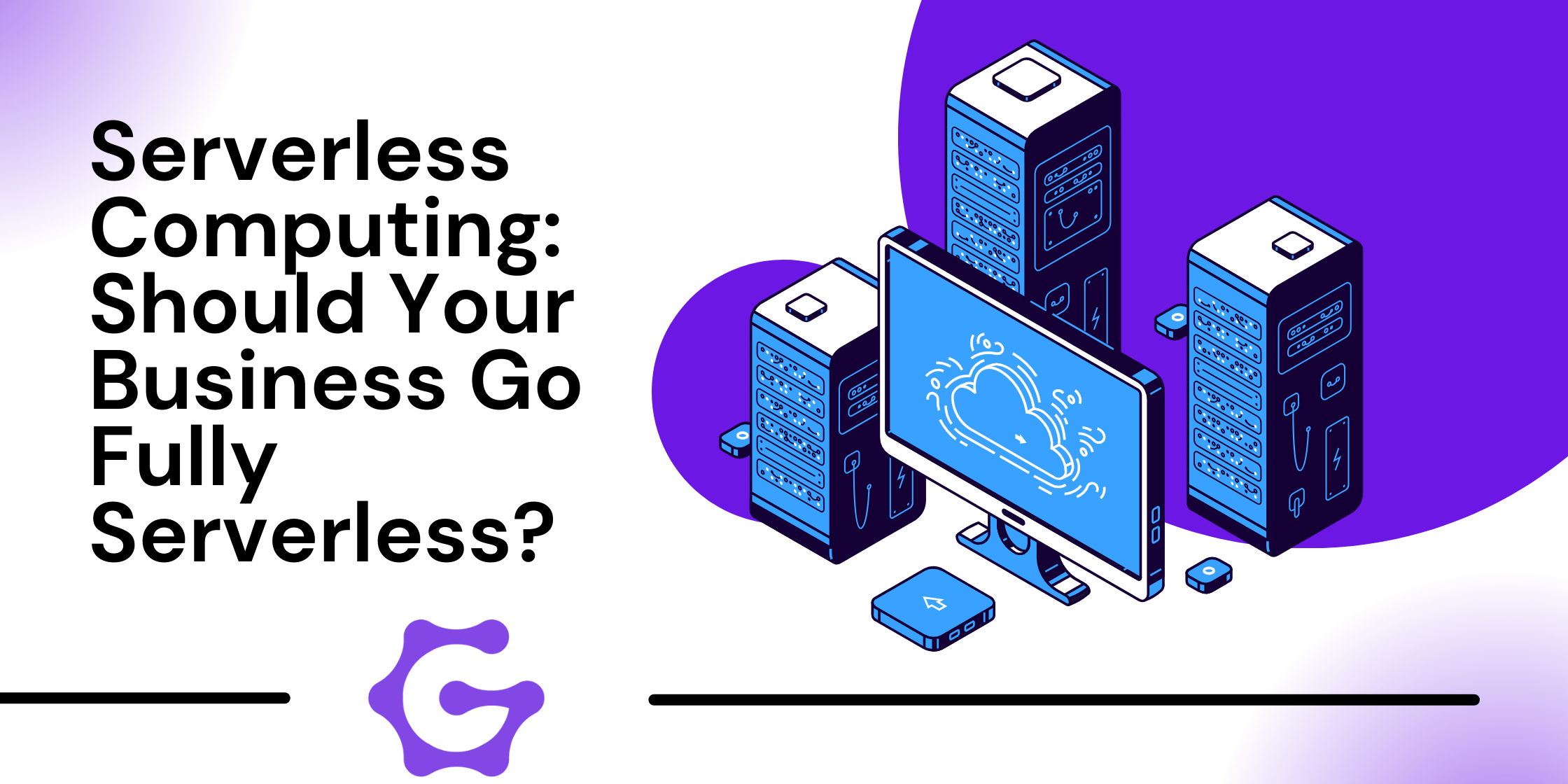Serverless Computing: A Game-Changer or Not the Right Fit for Your Business?

Instead of maintaining costly servers and infrastructure, businesses can now run code on-demand without worrying about provisioning or scaling. But is this shift to serverless computing all upside, or does it come with hidden challenges?
What Is Serverless Computing?
Despite the name, serverless computing doesn’t mean there are no servers. Instead, it means that developers don’t have to manage them. Instead of provisioning, maintaining, and scaling infrastructure, serverless computing allows businesses to run applications on cloud providers’ fully managed environments.
Cloud providers like AWS Lambda, Google Cloud Functions, and Azure Functions handle all the backend logistics, automatically scaling resources up or down based on demand. Businesses only pay for the computing power they actually use, eliminating the need for always-on servers.
Serverless is part of the broader Function-as-a-Service (FaaS) model, where applications are broken into individual functions that execute only when needed.
Benefits of Serverless Computing
Many businesses are adopting serverless computing because of its key advantages.
1. Cost Efficiency: Pay Only for What You Use
With traditional servers, businesses pay for fixed infrastructure costs regardless of usage. Serverless computing eliminates that overhead—you’re only billed when your functions are running. This means:
- No paying for idle server time
- Lower infrastructure maintenance costs
- Predictable, usage-based pricing
For startups and businesses with fluctuating traffic, this model can result in significant cost savings.
2. Seamless Scalability
Scaling infrastructure manually is a challenge. Serverless platforms handle this automatically, ensuring that applications scale instantly when traffic spikes and scale down when demand drops.
- No manual configuration—cloud providers adjust capacity in real-time
- High availability without worrying about over-provisioning resources
- Ideal for applications with variable or unpredictable traffic
For businesses running seasonal campaigns or event-driven applications, this elastic scalability is a major advantage.
3. Faster Time-to-Market
With serverless computing, developers focus on writing code instead of managing servers. This results in:
- Quicker development cycles since infrastructure setup is handled by cloud providers
- Easier deployment—code can be pushed to production without complex provisioning
- More time spent on building features rather than backend maintenance
For startups and agile teams, this speed can be the difference between leading the market or falling behind.
4. Improved Performance and Reliability
Serverless platforms distribute workloads across multiple data centers, ensuring low latency and high uptime. With automatic failover mechanisms, applications are more resilient to outages and traffic surges.
This makes serverless computing a strong choice for:
- Real-time data processing applications
- IoT and mobile backends needing low-latency responses
- Global applications requiring content delivery across different regions
Challenges and Limitations of Serverless Computing
Despite its benefits, serverless computing isn’t a one-size-fits-all solution. Businesses should consider potential downsides before making the switch.
1. Cold Starts Can Impact Performance
Since serverless functions only run on demand, they can experience “cold starts”—a slight delay when an inactive function is triggered for the first time.
- May slow down response times for infrequent requests
- Can impact high-performance applications that require instant responses
- Solutions like keeping functions warm (preloading instances) can mitigate this but may increase costs
2. Vendor Lock-In Risks
Serverless computing relies heavily on specific cloud providers such as AWS, Azure, or Google Cloud.
- Migrating applications between providers can be challenging and expensive
- Proprietary APIs and features may limit flexibility in the long run
- Multi-cloud strategies or containerized solutions (like Kubernetes) can reduce dependency on a single provider
3. Limited Customization and Debugging Challenges
With traditional servers, businesses have full control over their environment. In a serverless setup:
- Troubleshooting can be harder due to lack of access to the underlying infrastructure
- Debugging and monitoring require third-party tools or cloud-native solutions
- Long-running processes aren’t ideal, as serverless functions are designed for short, event-driven tasks
When Should You Use Serverless Computing?
Serverless computing is a great fit for certain workloads, but it’s not ideal for every application. Consider using serverless if your business:
- Needs auto-scaling capabilities for unpredictable traffic
- Runs event-driven applications such as real-time data processing, IoT, or chatbots
- Wants to minimize infrastructure management and focus on development
- Operates on a pay-as-you-go budget model for cost efficiency
However, serverless may not be ideal for:
- Applications requiring constant, long-running processes
- Workloads needing extensive backend control or custom configurations
- Businesses concerned about vendor lock-in and cloud provider dependencies